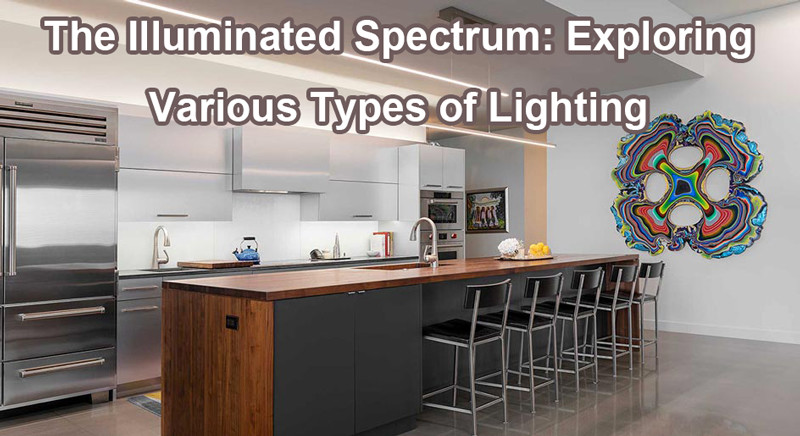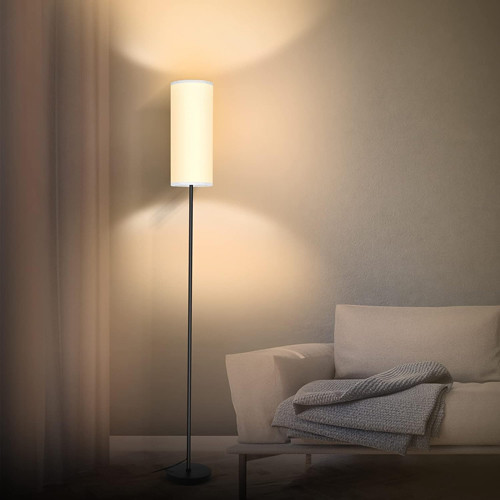
Lighting is more than just illumination; it sets the mood, enhances functionality, and can even transform spaces. From the cozy warmth of incandescent bulbs to the futuristic glow of LEDs, the world of lighting offers a vast array of options to suit every need and preference. In this exploration, we delve into the various types of lighting, examining their characteristics, applications, and unique qualities.
Types of Lighting
1. Incandescent Lighting:
Incandescent lighting, the traditional choice, generates light by heating a filament wire until it emits visible light. These bulbs produce a warm, inviting glow that’s ideal for creating a cozy ambiance in residential spaces. However, they are relatively inefficient, converting only about 5-10% of the energy they consume into visible light, with the rest being emitted as heat.
2. Fluorescent Lighting:
Fluorescent lighting relies on the excitation of mercury vapor to produce ultraviolet light, which then stimulates a phosphor coating on the bulb to emit visible light. This type of lighting is widely used in commercial and industrial settings due to its energy efficiency and longevity. While it may not offer the same warmth as incandescent bulbs, modern fluorescent tubes come in a variety of color temperatures to suit different environments.
3. LED Lighting:
Light Emitting Diodes (LEDs) have revolutionized the lighting industry with their unparalleled energy efficiency, longevity, and versatility. LEDs produce light by passing an electrical current through a semiconductor, resulting in the emission of photons. They come in various colors and can be dimmed to adjust the intensity of the light. LED lighting is now ubiquitous in both residential and commercial applications, from task lighting to architectural illumination.
4. Halogen Lighting:
Halogen lamps operate similarly to incandescent bulbs but use a halogen gas to increase efficiency and prolong the life of the filament. They produce a bright, white light that closely resembles natural daylight, making them popular for task lighting in kitchens, workshops, and retail spaces. However, they can also generate significant heat and require careful handling to prevent accidents or fire hazards.
5. Compact Fluorescent Lamps (CFLs):
CFLs are a more compact and energy-efficient alternative to traditional fluorescent tubes. They operate on the same principle but are coiled to fit into standard light fixtures. CFLs have gained popularity as a greener option for residential lighting, offering improved energy savings and a longer lifespan compared to incandescent bulbs. However, they may contain small amounts of mercury, requiring proper disposal to minimize environmental impact.
6. Induction Lighting:
Induction lighting utilizes electromagnetic fields to excite gas molecules within a bulb, causing them to emit light. This technology offers high efficiency and durability, with some induction lamps boasting lifespans of up to 100,000 hours. Induction lighting is commonly used in outdoor applications such as street lighting and parking lots, where reliability and maintenance are critical factors.
7. Sodium Vapor Lighting:
Sodium vapor lamps produce light by passing an electrical current through sodium vapor, resulting in a characteristic yellow-orange glow. While not suitable for general illumination due to their monochromatic output, they are highly efficient and are often used for street lighting and outdoor security lighting. However, their color rendering properties are limited, making them less suitable for environments where color accuracy is important.
8. Metal Halide Lighting:
Metal halide lamps combine mercury vapor with metal halide salts to produce a bright, white light with excellent color rendering properties. They are commonly used in sports stadiums, arenas, and large indoor spaces where high-intensity illumination is required. Metal halide lamps offer a good balance between efficiency and light quality, making them a popular choice for commercial and industrial applications.
9. Neon Lighting:
Neon lighting relies on the unique properties of neon gas to produce a vibrant, colored glow. While primarily used for signage and decorative purposes, neon lights can add a touch of retro charm to any space. They are available in a variety of colors and can be customized to create intricate designs, making them a favorite among artists, designers, and business owners alike.
10. Fiber Optic Lighting:
Fiber optic lighting uses optical fibers to transmit light from a remote source to a desired location. This technology offers unparalleled flexibility and precision, allowing for the creation of intricate lighting effects without the need for traditional light fixtures. Fiber optic lighting is commonly used in architectural applications, art installations, and underwater lighting, where conventional lighting methods would be impractical or visually intrusive.
Conclusion
In conclusion, the world of lighting is as diverse and dynamic as the spectrum of light itself. From the timeless warmth of incandescent bulbs to the cutting-edge efficiency of LEDs, each type of lighting offers its own unique set of characteristics and applications. By understanding the strengths and limitations of different lighting technologies, we can harness the power of light to enhance our surroundings, evoke emotions, and illuminate the world around us.
 WOWOW Faucets
WOWOW Faucets




